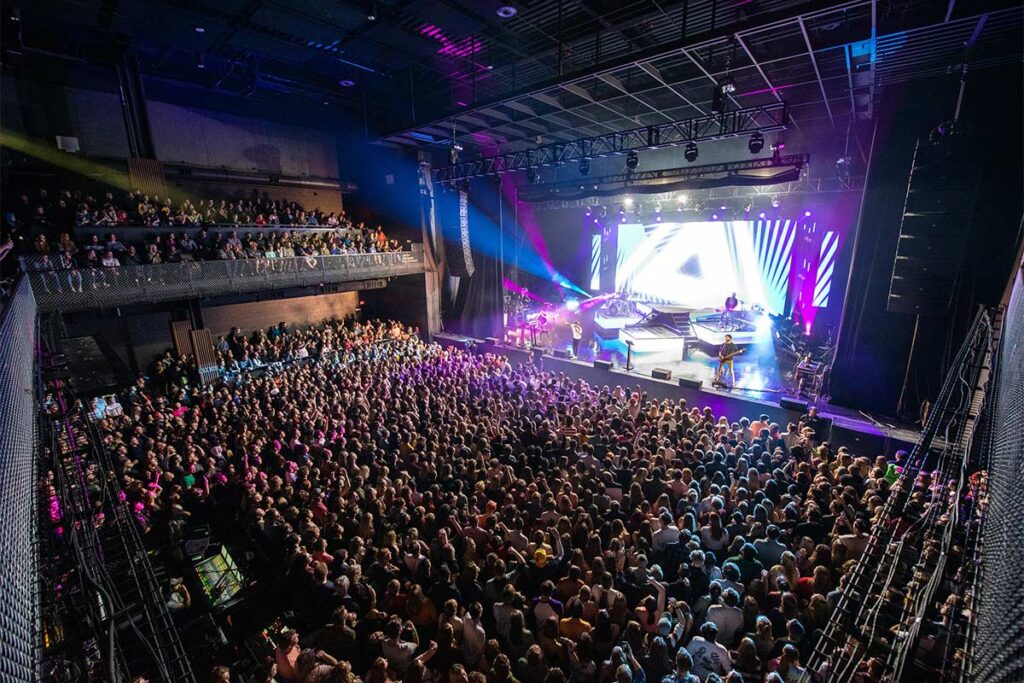OBJECTIVE:
Tale of Two Buildings
The Gebhardt Building, an eight-story mixed-use high-rise in Madison’s emerging East Washington gateway, is really the story of two buildings: The Gebhardt and The Sylvee. The integration of these two buildings on a single site creates not only an iconic performance venue and a public destination, but also provides a mix of retail and office spaces that help support the dense urban fabric of Madison’s isthmus.
This building is a unique design, housing both office space and a music performance venue for Frank Productions. We worked closely with the client to bring out the best of the entertainment space without impacting the quality of the offices.
SOLUTION:
Regional Redevelopment
The north side of the eight-story high-rise includes 125,000 SF of retail and commercial office space, including Strang’s new Madison office. The building’s south side features The Sylvee, Frank Productions’ new 2,500-person music venue. This 45,000-SF space features VIP suites and is a great addition to the exciting and dynamic music culture of Madison. This project’s mixed-use urban redevelopment is a part of the resurgence of the Capitol East District corridor, long in need of an economic boost.
The Gebhardt building, itself, is primarily an office tower, implementing both materials and forms similar to the surrounding buildings, thereby integrating itself into the fabric of the neighborhood. Ample glazing throughout, especially on the upper four floors of the tower, allows tenants equal access to daylight and views. Many floors enjoy views of both Madison lakes, owing to the unique geography of the isthmus. The first generation of tenants includes many iconic brands, increasing the vibrancy of the neighborhood. This space integrates international brands, like Google and Spaces co-working, with local icons, such as Frank Productions and the Vintage Brewery. Both the general contractor and the design firm (Strang) responsible for the core-and-shell design and construction of the development are also located in the building. The retail functions on the first floor ensure street-level activation throughout the day and into the night.
The result of this creative collaboration between multiple ownership groups and the design team is a unique mixed-use tower that not only vitalizes Madison’s Isthmus through office and retail uses but also provides a musical venue specifically designed for memorable experiences for both artist and patron, alike.
































